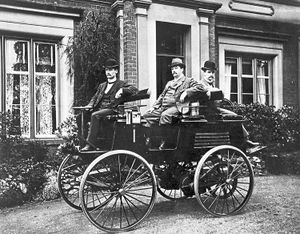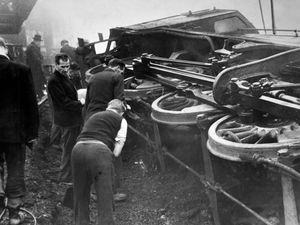Will whisky fuel the cars of the future?
Is it finally the end of the road for the internal combustion engine?

With Transport Secretary Grant Shapps announcing that the sale of petrol and diesel cars will be banned within 15 years, it certainly looks like their days could be numbered.
In truth, the real surprise is that they are still on sale today. Ever since American geologist Marion King Hubbert raised the prospect of the world's oil supplies running out in 1956, there has been speculation about how much longer conventionally powered cars would be around, and what would fuel the transport of the future.
For most of the past half century the assumption has been that the future is electric, and that certainly seems to be the way that the Government foresees the future of road transport. But it is not the only alternative, indeed a range of different power sources, ranging from solar panels to whisky and chip fat have been looked at in the past. Here we look at 10 of the most interesting, with varying degrees of feasibility:
1. Electricity
This is the traditional favourite, the first electric car was built by Scottish inventor Robert Anderson in 1832, and Ironbridge-born Thomas Parker started producing them commercially from his Wolverhampton works in 1884. The disadvantage has always been the weight of the batteries, which meant they lost out to the internal combustion engine at the end of the 19th century, but the technology has grown rapidly over the past 30 years, and they are now more popular than ever. The disadvantage, of course is the pressure it will put on the electricity grid – and how the energy will be generated to power them.
2. Solar
Solar powered cars may work very similarly to solar panels, with the sun's energy being converted into electricity to power the vehicle. The advantages are obvious: not only would there be zero emissions, but the lucky owner of a solar-powered vehicle would, in theory, never have to pay for fuel. The difficulty has always been the size and weight of the panels needed to produce the energy plus, of course, the fickle nature of the weather. Last year, Toyota produced a plug-in electric car with a solar panel on the roof, which increased its range by 27 miles, so the technology may have a role to play in future, but at the moment solar-powered cars seem to be a long way off.

3. Biogas
Remember those pictures of cars from the war years, fuelled by sacks of cow dung on the roof? Well the technology has moved on a bit since then. Biogas is a mixture of gases produced by breaking down organic matter such as manure and gardening waste. It has been estimated that converting cars to use biogas could cut greenhouse gas emissions by 80 per cent.
4. Biodiesel
Biodiesel is similar to biogas in that it’s created from waste liquid, such as animal fats and vegetable oils. Biodiesel is currently being mixed in with regular diesel to offer drivers a more environmentally friendly fuel option. The problem is that diesel cars are going to be banned anyway.
5. Chip fat
One of the components of biodiesel is waste cooking oil, and many people may recall how, some years ago, a television motoring show ran an old Mercedes diesel on waste oil from a chip shop. But while it is technically feasible, it is hard to see how it would work with the ban on new diesel cars. The other problem is the smell that comes with it – it could well cause a stink among the neighbours.
6. Whisky
Well, strictly speaking it's the waste left over from producing whisky. Biobutanol is is made from the barley kernels once whisky has fermented, and it works in exactly the same way as diesel does. But while it is produced from a more sustainable source, there are questions about whether it is really any better for the environment than diesel.
7. Steam
The first motorised road vehicle, a three-wheeler developed by Nicholas Cugnot in 1769, was steam powered, and steam cars were popular in the United States in the late 19th century, until petrol power won the battle for supremacy. The obvious disadvantage is that not only is coal a less convenient source of fuel than petrol or diesel, it is considered even more harmful to the environment, with the Government trying to phase it out altogether. Research has been carried out into producing steam engines heated by solar power, though.

8. Nitrogen
This gas is readily available in the atmosphere and will create fewer harmful emissions than petrol and diesel. However, problems arise from using nitrogen due to the gas needing to be kept cold to ensure it stays in liquid form.
9. Ammonia
Ammonia is an easy fuel to burn within an engine and ensure no harmful emissions are leaked into the atmosphere, due to the way the molecule is composed. There have been plenty of studies into this fuel, making it an extremely viable option in the future, but will be some years away.
10. Hydrogen
Hydrogen is the dream fuel for an eco-friendly future: easily produced from water, its emissions also come in the form of water.
But the rare materials required to make hydrogen fuel cells for vehicles means they are expensive to produce, but if a cheap and environmentally sustainable way is ever found to extract the gas from water, then it could revolutionise the future of road travel. Fears about what happened to the Hindenburg could make the buying public nervous though.
A spokesman from LeaseVan.co.uk, says there are plenty of alternatives to petrol or diesel, but some of these may be more realistic than others.
“We have seen a lot of recent changes with regards to alternative fuels, mainly down to the increase in production, and use, of electric and hybrid vehicles," he said.
“Some of these alternative fuels are very much in the testing stage, so don’t expect to be able to buy a car fully fuelled by ammonia anytime soon.
“And although it goes without saying, we don’t recommend drivers go filling their tanks with whisky or cooking oil as it’s not what current vehicles are built for and it could prove rather costly.”





